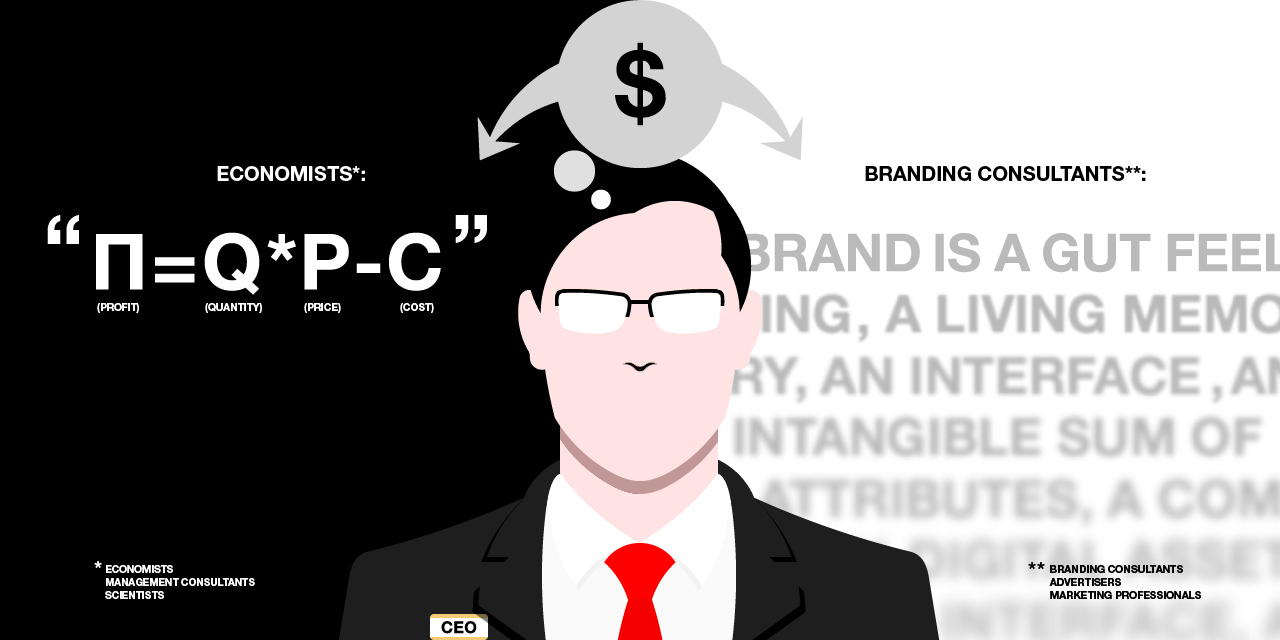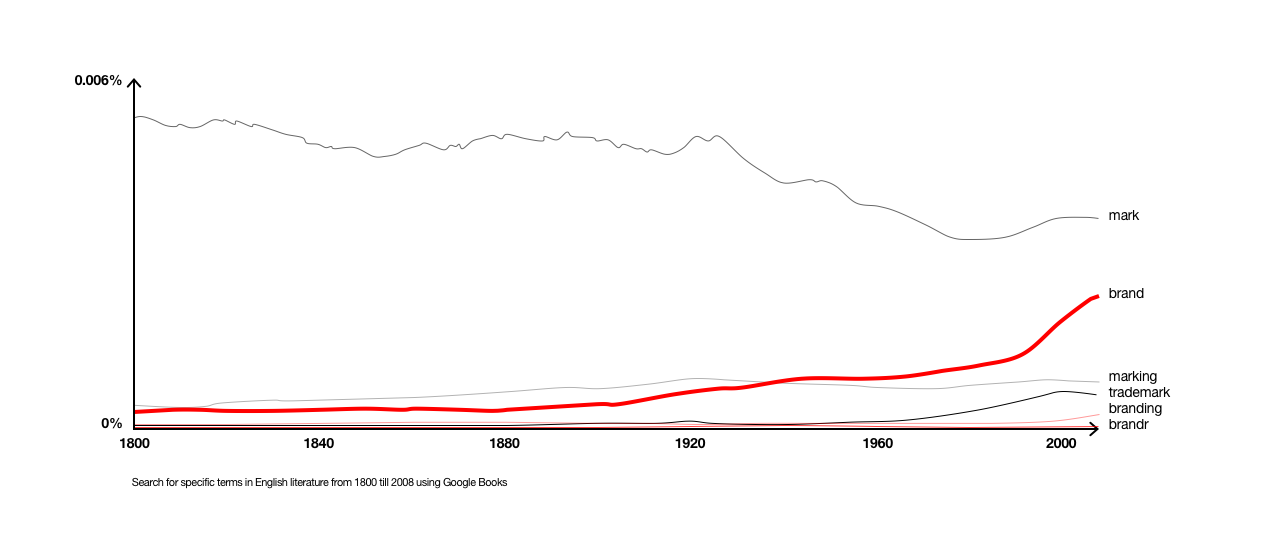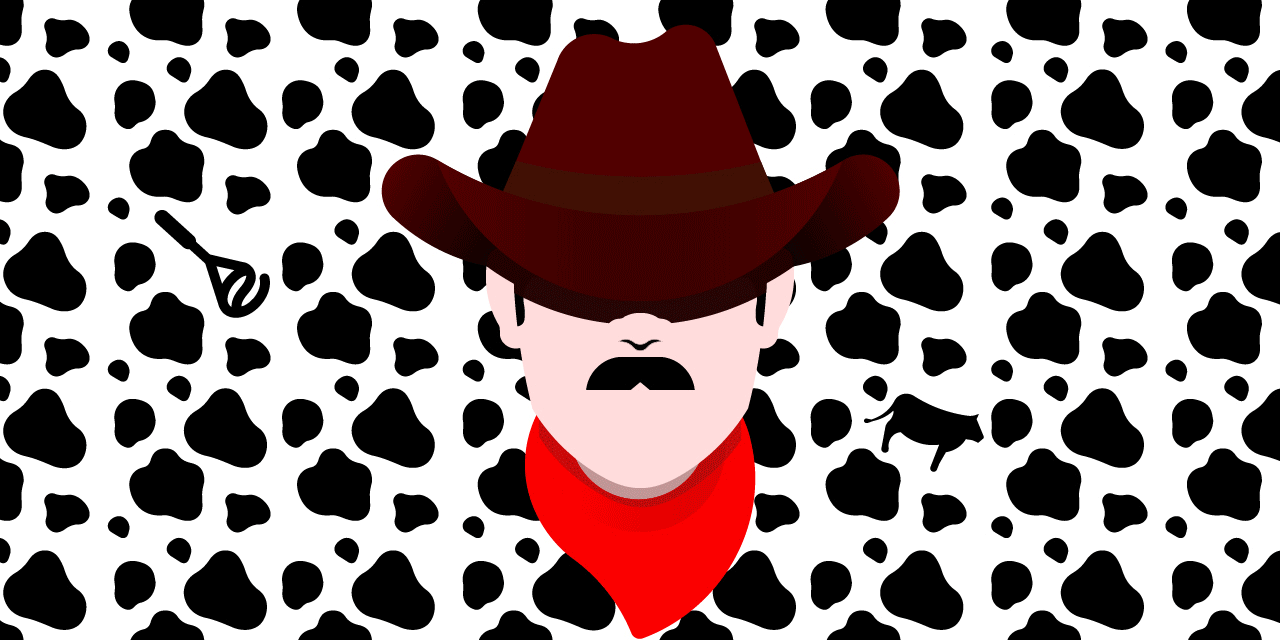Thinking
What is brand?
What is brand?
In this first installment of a fascinating foray into the fundamentals of branding, consultants Calin Hertioga and Johannes Christensen explore what brands are and how they’re used, both by businesses and culture at large.
Imagine you enter a bank, ask for an account statement to see how much money you have, and the clerk says something like:
“Your money – well, you see, your money is like a gut feeling I have about your worth.”
And when you return a blank stare, she goes on –
“If I think you’re rich, judging by your clothes, for example, then here at the bank we credit your account.”
“But…”
“Money is an interface between the bank and you, an idea I have in my mind about your assets.”
“…?”
Scratching your head? Fortunately, a scene like this never happens. If you go to a bank, you can trust that all employees have a common understanding of what “money” means. If you go to a hospital, you strongly hope that all doctors will have an aligned understanding of what “disease” means. In general, we expect professionals to share a common view of the fundamentals of their trade.
This is not true in branding. Experts do not share a common view of what “brand” means. They call it everything from a gut feeling, a living memory, or an interface, to an intangible sum of attributes, or a business asset. To confuse matters further, many are using “brand” when they actually mean something else (e.g., “company” or “image”).[1]
There is one definition for “profit” and at least 30 for “brand” (or “branding”). If you were a CEO, what advisors would you spend your money on, factual sounding economists or metaphorically convoluted brand consultants who don’t seem to know what exactly they’re talking about?

Leading economists have been getting it wrong for decades – yet people still trust them. “Brand fluff people” have been intuitively getting it right for decades – yet people still don’t trust them.[2] This is just one example of how important a well-defined vocabulary is.
Us branding professionals can take part of the blame. Instead of defining the fundamental term of our profession in a straight-forward way, we each create our own individual metaphors when talking about brand, often mistaking a description for a definition. The lack of a commonly accepted foundation for our profession makes the discourse imprecise at best and illogical at worst, which is a barrier to gaining trust with senior management in many companies.
So, what is a brand? Let’s start by looking at the evolution of the word.
The original, unambiguous purpose of branding was to identify a product or service as belonging to a certain entity. For thousands of years[3], people engraved or burnt signs into goods to identify them as their own. Two words emerged for this – the Greek-derived “marking / mark” for engraved or painted symbols you might find on ceramics, teas, and early traded goods, and the Old Norse-derived “branding / brand” for burnt-in symbols that identified ownership of domestic animals, for example. In time, “mark” established itself in German, Italian, French, while “brand” took over as the generic term for “markings” in English.[4] It is only relatively recently that the usage of “brand” increased notably. If we look at its frequency in Google-digitized books, as an illustrative and not exhaustive example, the word “brand” became more prevalent in writing at the beginning of the 20th century, but only experienced a significant increase in the 1980’s, along with the dawn of brand consultancies.

But what do—or rather, what should—the terms “brand” and “branding” mean? Livestock branding has had the same unambiguous meaning from its appearance as a term. In time, as interactions between buyers and sellers diversified, sellers went beyond “burning” visual signs, and began using colors, textures, and smells, to identify their goods (and services), but also words, phrases, behaviors, and rituals, carried out across multiple touch points.
Branding has thus evolved to include everything that the entity does with the intention of being recognized. A livestock brand is a symbol used for recognition (you can still find “community brand walls” in the American West). Keeping with the original meaning, a modern brand remains the result of such branding activity, only now incorporating many different kinds of intentional expressions.
Merging two organizations—culturally, strategically, and from a brand perspective—is a daunting proposition. It isn’t any less daunting to learn that between 70 and 90 percent of mergers are a failure.
Still, the number of M&As is only increasing globally—and successful management of a merger or acquisition is crucial to future growth.
Maybe it helps to think of it this way: How often do we get a chance to reinvent ourselves? Moving to a different city, making a career change—a few times in our lives, maybe. For your brand, an M&A can offer exactly that.
A brand is the sum of all expressions by which an entity (person, organization, company, business unit, city, nation, etc.) intends to be recognized.
That’s it. Not more, not less. A definition does not have to inspire or guide. The definition of life doesn’t provide guidance how to live it. The definition of football is quite dull, but what wealth of emotion is triggered by playing and watching it!

There is no reason to swap the meaning of an unambiguous term with something more ambiguous. Doing so adds cognitive load, increases the potential for confusion, and makes common understanding more difficult – as we see with brands and branding.
Language evolves, and a word’s meaning may change over time, but the only good reason to switch definitions is that the new definition is being used quasi-unanimously and that it is equally unambiguous as the original. This is not the case with most definitions of “brand” floating around the industry. They add concepts like image, promise, or experience to the meaning of “brand” – which is superfluous and counterproductive. The (etymo)logically derived, modern definition of the term as presented above has an important enough role in current economic reality and should not need additional bells and whistles to command due attention.
A definition functions in much the same way as the foundation of a house. It stays under the surface, may not be particularly attractive, but it ensures the stability of the whole building. It almost never becomes a subject of conversation again – unless it is shaky.
To ensure our definition is not shaky, we have applied two tests: Biconditionality and Occam’s razor.[5]
By combining these tests, we get to three criteria that we can run any definition against:
Feel free to challenge every definition of brand you see – including the one proposed in this article – by these criteria. For example: Defining brand as an “interface,” or “business asset,” does not go far enough because not all interfaces or business assets are brands. Another example: Jeff Bezos famously said “a brand is what people say when you’re not in the room.” There is already a word for that – reputation. Sorry, Jeff, your definition sounds cool, but is not accurate.
Taking the pill ourselves: Are all “sums of expressions through which an entity wants to be recognized” brands? Yes. Also, take any word away, and the definition loses its meaning or becomes imprecise, while any additional word would be redundant or unnecessary.
“Wait a second. Surely, ‘brand’ means more than that. Recognition, ok, but what about persuasion and loyalty? Brands are surely about promises too, and reputation.”
Persuasion and loyalty are not driven exclusively by the brand, and therefore do not belong in the definition (Occam’s Razor: the one with the fewest arguments is the best). Business models, marketing tactics, and environmental constraints all influence persuasion and loyalty, with or without branding. It is recognition that is branding’s function. That being said, if done well, branding can influence persuasion and loyalty by providing orientation, fostering trust, and enabling self-expression (we are what we buy).
Every entity creating expressions with the intention of being recognized (pretty much every company and person we know) has a brand, but simply having a brand does not spell success. Brands serve recognition, for better or worse. Only strong brands help with persuasion and loyalty that lead to a substantial increase in economic value above a baseline business.
What about promise and reputation? A promise is a prerequisite of a strong brand, part of the branding strategy. Reputation and image are influenced by branding, but also by other factors, which are not inherent to brands (competition, market changes, etc.). Neither term should be part of the essential definition of brand.
What about brands vs. trademarks? Trademark is a legal term used to describe a protected, intangible asset. Brands include expressions that cannot be classified as physical “markings,” that facilitate recognition but are not protectable as trademarks. For example, the way a person speaks can be recognizable – think of Martin Luther King, or…Donald Trump – but currently cannot be registered as trademarks. (Should they?)
So what? Why is this important to branding professionals? What should we do differently?
Clarity of thought: A solid definition helps clarify which of a company’s actions can be classified as “branding” and which can’t. For example, the front grille of a car is, in most cases, a branding element – if the car manufacturer wants to be recognized by its shape. A piston inside the engine, however, looks mostly the same in all cars, as the laws of physics bind it to having a certain shape to deliver the best performance. Therefore, the shape of the piston is NOT an element of branding.
Not everything a company does is branding – only what it does with the intention of being recognized. This should help us clarify vocabulary, and know when to advise on business strategy, when to advise on branding strategy, and what the relationship between them is.
Clarity of speech: As brand professionals, we should avoid using “brand” when it doesn’t apply, thereby reducing clutter and creating more universal clarity. For example, knowing exactly what a brand is should help us refrain from using it as a metonym for “company.” E.g., “Brands should invest in…” – no. Companies, business units, or people invest. Brands cannot invest. This should not lead to a decrease in brand importance. On the contrary, our definition implies that everybody brands, whether they like it or not. Every entity performs intentional actions in order to be recognized. The choice is not whether to brand or not to brand, but to brand well or not to brand well. And that’s where the art and science of brand strategy and management shine.
Clarity of method: Brands do not exist on their own, outside of the entity creating them. Good branding should therefore pay special attention to both the entity and its stakeholders. A company, for example, creates countless expressions intended to generate recognition. Products, services, processes, rituals, design elements, and sensorial experiences can all contain branding elements. Leaving any of them to chance presents an inherent risk – it is preferable to have a system to manage these expressions. Brand creation and management should take advantage of the latest science on signaling, information processing, and decision-making, in order to create expressions with the highest efficiency and impact.
So as you think about how to best leverage your brand, or the one that you are responsible for, remember:
A brand is the sum of expressions by which an entity intends to be recognized.
A definition should just tell things the way they are – what we then build on that is the important part. Loading expressions with meaning is what makes or breaks a good brand – and often, a good company. More on that in the next installment of our branding fundamentals series.
Below a list of references, for your information, entertainment, or outrage.
[1] On the various ways in which brands are described:
https://www.humanisethebrand.com/best-quotes-marty-neumers-brand-gap/
https://www.drypen.in/branding/brand-is-a-living-memory.html
https://www.ogilvy.com/events/cannes-2015-events/brand-as-interface/
https://www.deeprootdigital.com/blog/what-is-a-brand/
https://brandchannel.com/brand-glossary/brand/
A metonym is a word used instead of another word, e.g. “the White House” is a metonym for the “Presidency of the United States”: https://www.merriam-webster.com/dictionary/metonymy
An example of dodgy use: “A brand is a promise. Strong brands have relevant, differentiated and credible promises that they keep.” If a brand is a promise, how can it have a promise? https://www.dolphinbrandstrategy.com/whatwedo.html#brandwhat
[2] On economists being wrong:
https://www.theatlantic.com/business/archive/2013/01/the-irrational-consumer-why-economics-is-dead-wrong-about-how-we-make-choices/267255/
On branding people not being trusted:
https://hbr.org/2017/07/the-trouble-with-cmos
[3] “Branding probably began with the practice of branding livestock in order to deter theft. Images of branding oxen and cattle have been found in ancient Egyptian tombs, dating to around 2,700 BCE.[9] Over time, purchasers realised that the brand provided information about origin as well as ownership, and could be used as a guide to quality. Branding was adapted for use on other types of goods such as pottery and ceramics. Some form of branding or proto-branding emerged spontaneously and independently throughout Africa, Asia and Europe at different times, depending on local conditions. Seals, which acted as quasi-brands, have been found on early Chinese products of the Qin Dynasty (221-206 BCE); large numbers of seals from the Harappan civilization of the Indus Valley (3300–1300 BCE) where the local community depended heavily on trade; cylinder seals were introduced in Ur, Mesopotamia in around 3,000 BCE and facilitated the labelling of goods and property; and the use of maker’s marks on pottery was commonplace in both ancient Greece and Rome [10] Identity marks, such as stamps on ceramics, were also used in ancient Egypt.[11]”
[4] On marks and brands:
Medic, Mane & Medic, Igor & Pancic, Mladen. (2009). Mark vs. Brand – Term and Controversies. Interdisciplinary Management Research. 5. 147-154. https://www.researchgate.net/publication/46561429_Mark_vs_Brand_-_Term_and_Controversies [5] Occam’s Razor: Original: Non sunt multiplicanda entia sine necessitate https://science.howstuffworks.com/innovation/scientific-experiments/occams-razor.htm